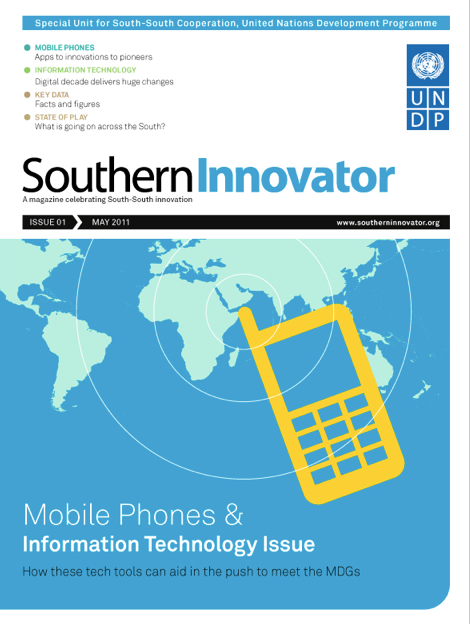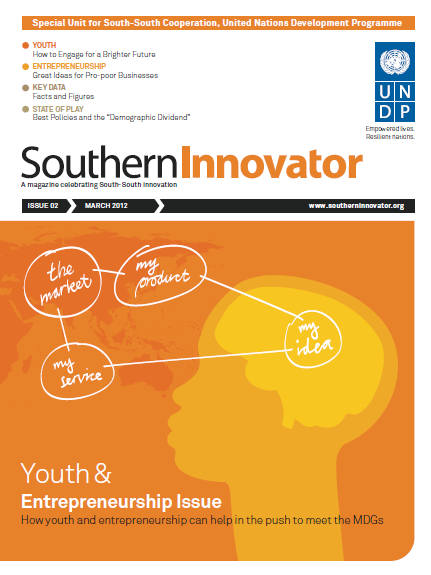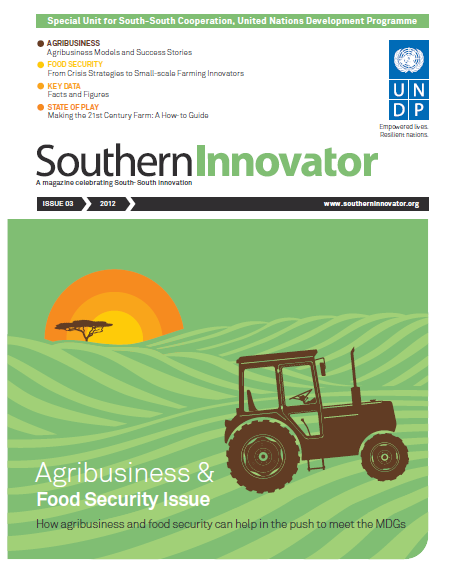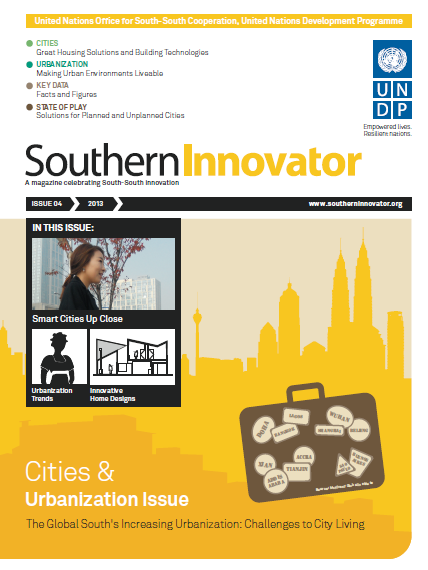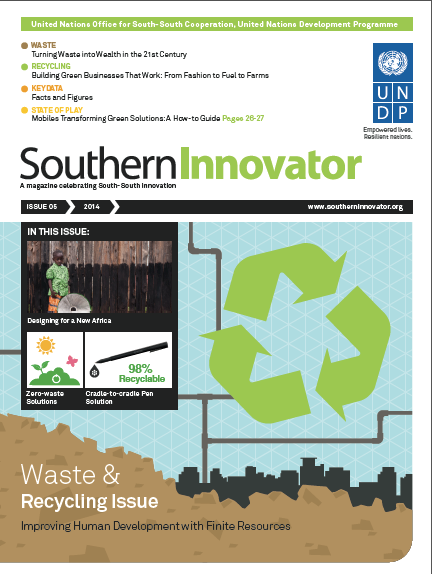Turning Animal Waste Into Paper
 Wednesday, June 24, 2015 at 11:40AM
Wednesday, June 24, 2015 at 11:40AM

Animal waste is a messy fact of daily life in rural communities across the global South. This byproduct of life has many uses – but an ingredient for making writing paper is probably not the first that springs to mind.
But animal dung is cleverly being recycled into high-value products in Sri Lanka and Thailand. Both countries have elephants who are under threat. In Sri Lanka (http://en.wikipedia.org/wiki/Sri_Lanka) the large but endangered elephant population is considered a nuisance. They damage crops and are often killed for this reason. There are upwards of 3,000 elephants in the country – down from 14,000 in the 1800s. Nonetheless, they create vast quantities of excrement. In Sri Lanka, they face many threats: ivory poachers, being killed to protect crops and houses, starvation from drought and deforestation.
Animal waste (http://en.wikipedia.org/wiki/Feces) has many uses: it can be turned into fertilizer for crops, fuel for cooking, placed in a digester and fermented into bio-gas for heating and cooking, and if from a herbivore animal, into fibrous products like paper and cardboard. Packing boxes can also be made from the excrement.
As a vegetarian animal, elephants’ excrement and dung is made up of vegetable matter and is rich in cellulose (http://en.wikipedia.org/wiki/Cellulose). And cellulose is what makes up the majority of traditional wood-pulp paper (http://en.wikipedia.org/wiki/Pulp_%28paper%29).
Re-using the waste is also a good way to make elephants valuable to local people, rather than just being perceived as a nuisance.
Dung produces a natural, recycled paper. While harvesting trees for paper is an expensive and energy-wasting process, the elephant’s digestive tract does the hard work by breaking down the cellulose, making it ideal for the next stage in becoming a paper product.
According to the Environmental Paper Network (http://www.environmentalpaper.org/stateofthepaperindustry/confirm.htm), 50 percent of the world’s forests have been destroyed, and 80 percent of the remaining forests are in a degraded state. By turning to alternative sources to make paper, trees are saved and vast quantities of energy reduced. Traditional paper-making also uses many chemicals in the process, something that is avoided in using animal dung. Vegetable products are used to bind the paper together and water-soluble dyes are used to colour the paper.
Dung paper has earned some high-profile fans as well. The Turner Prize-winning British/Nigerian artist Chris Ofili (http://en.wikipedia.org/wiki/Chris_Ofili), uses elephant dung paper in his works.
The Elephant Dung Paper company (www.elephantdungpaper.com) in Thailand was one of the first to pioneer the technique. This business was started by dung paper pioneer Mr. Wan Chai. He tells a story of how he became enchanted by the paper-making process when he walked past a paper factory one day. Later, when he was at the Thai Elephant Conservation Center in Lampang, northern Thailand (http://www.changthai.com), he noticed the elephant dung was rich in fibres like those used in making paper from wood pulp.
Inspired, he embarked on a process of trial and error using his wife’s food processor to turn elephant dung into a fibrous stew that is then shaped, dyed and dried to make paper (http://www.elephantdungpaper.com/process.html).
Wan Chai has gone on to be a formative influence in the founding of a sheep dung paper making operation in Britain, Creative Paper Wales.
Another dung paper business is Mr. Ellie Pooh (http://www.mrelliepooh.com/) in Sri Lanka. Established with the goal of reducing conflict between humans and elephants, it has turned to making paper products to boost local incomes and create a direct economic incentive to protect the elephants. It is setting up handmade paper workshops in rural areas and teaming them with artisans to add value to the products and make them more desirable. Design is critical to making any product – no matter how ethically produced and how green – desirable to consumers.
The dung products Mr. Ellie Pooh makes include a wide variety of coloured papers, scrapbooks, note boxes, stationery pouches, greeting cards, ‘to do’ list pads, memo books, and a children’s book.
The process of making elephant dung paper takes about 13 days – three days of sorting, boiling and disinfecting, followed by 10 days to pulp, mix, press and dry the paper. Mr. Ellie Pooh makes about 1,000 sheets a day and 30,000 a month. Each sheet makes six A4-size pieces of paper.
The company was founded by Dr. Karl Wald and Thusitha Ranasinghe, and is managed by recycled paper firm Ecomaximus (http://www.ecomaximus.com/) based in Colombo, Sri Lanka, with a workshop in Kegalle.
Ecomaximus was started in 1997 by its Managing Director, Ranasinghe, who was following a family tradition going back three generations of working in printing.
The business started recycling waste printing paper and then moved into recycling a wide variety of other cellulose waste: rice paddy straw, cinnamon and banana bark. It now employs over 35 people on two sites.
It is proof that it just takes creativity and a new perspective to turn something considered as waste into wealth: and jobs and sustainable incomes.
By David South, Development Challenges, South-South Solutions
Published: January 2011
Development Challenges, South-South Solutions was launched as an e-newsletter in 2006 by UNDP's South-South Cooperation Unit (now the United Nations Office for South-South Cooperation) based in New York, USA. It led on profiling the rise of the global South as an economic powerhouse and was one of the first regular publications to champion the global South's innovators, entrepreneurs, and pioneers. It tracked the key trends that are now so profoundly reshaping how development is seen and done. This includes the rapid take-up of mobile phones and information technology in the global South (as profiled in the first issue of magazine Southern Innovator), the move to becoming a majority urban world, a growing global innovator culture, and the plethora of solutions being developed in the global South to tackle its problems and improve living conditions and boost human development. The success of the e-newsletter led to the launch of the magazine Southern Innovator.
Follow @SouthSouth1
Google Books: https://books.google.co.uk/books?id=7kqYBgAAQBAJ&dq=development+challenges+january+2011&source=gbs_navlinks_s
Slideshare: http://www.slideshare.net/DavidSouth1/development-challengessouthsouthsolutionsjanuary2011issue
Southern Innovator Issue 1: https://books.google.co.uk/books?id=Q1O54YSE2BgC&dq=southern+innovator&source=gbs_navlinks_s
Southern Innovator Issue 2: https://books.google.co.uk/books?id=Ty0N969dcssC&dq=southern+innovator&source=gbs_navlinks_s
Southern Innovator Issue 3: https://books.google.co.uk/books?id=AQNt4YmhZagC&dq=southern+innovator&source=gbs_navlinks_s
Southern Innovator Issue 4: https://books.google.co.uk/books?id=9T_n2tA7l4EC&dq=southern+innovator&source=gbs_navlinks_s
Southern Innovator Issue 5: https://books.google.co.uk/books?id=6ILdAgAAQBAJ&dq=southern+innovator&source=gbs_navlinks_s

This work is licensed under a
Creative Commons Attribution-Noncommercial-No Derivative Works 3.0 License.
 By David South,
By David South,  January 2011,
January 2011,  SSC,
SSC,  South-South Solutions,
South-South Solutions,  Southern Innovator magazine,
Southern Innovator magazine,  UNOSSC,
UNOSSC,  animal waste,
animal waste,  global South,
global South,  innovators,
innovators,  new magazine,
new magazine,  paper,
paper,  pioneers in
pioneers in  Austerity,
Austerity,  David South Consulting,
David South Consulting,  Development Challenges, South-South Solutions,
Development Challenges, South-South Solutions,  GSSD Expo,
GSSD Expo,  Global South-South Development Expo,
Global South-South Development Expo,  Solutions,
Solutions,  Southern Innovator Magazine,
Southern Innovator Magazine,  UN Innovator Stories,
UN Innovator Stories,  UNDP,
UNDP,  UNDP Innovator Stories,
UNDP Innovator Stories,  UNOSSC,
UNOSSC,  United Nations
United Nations 
